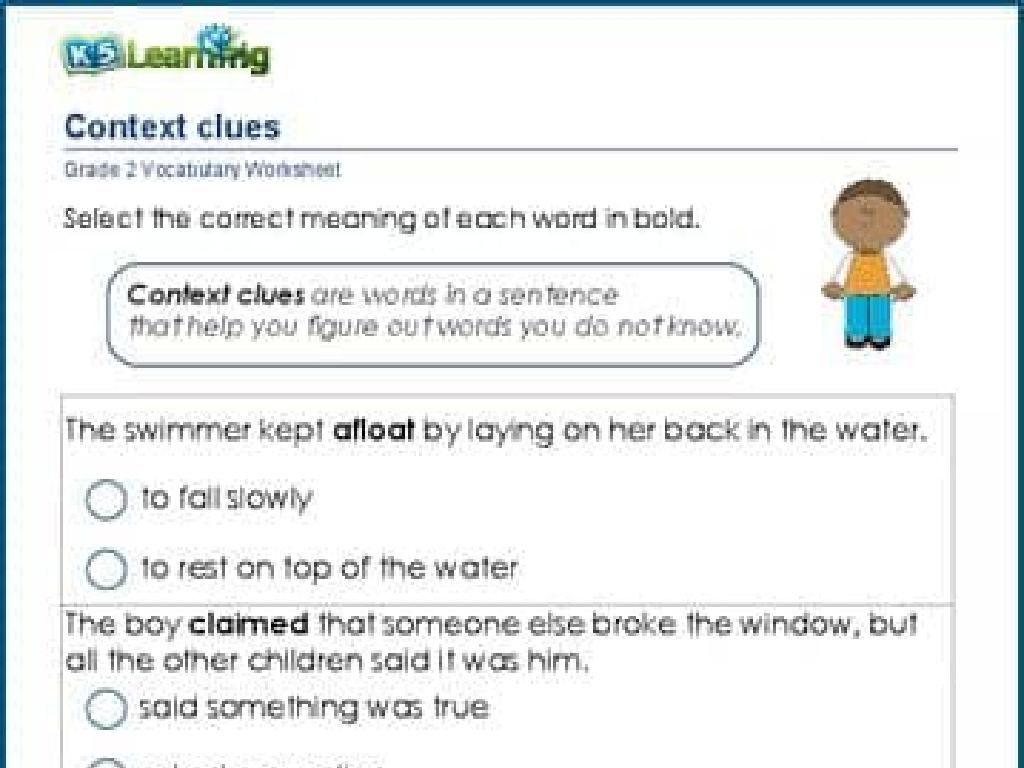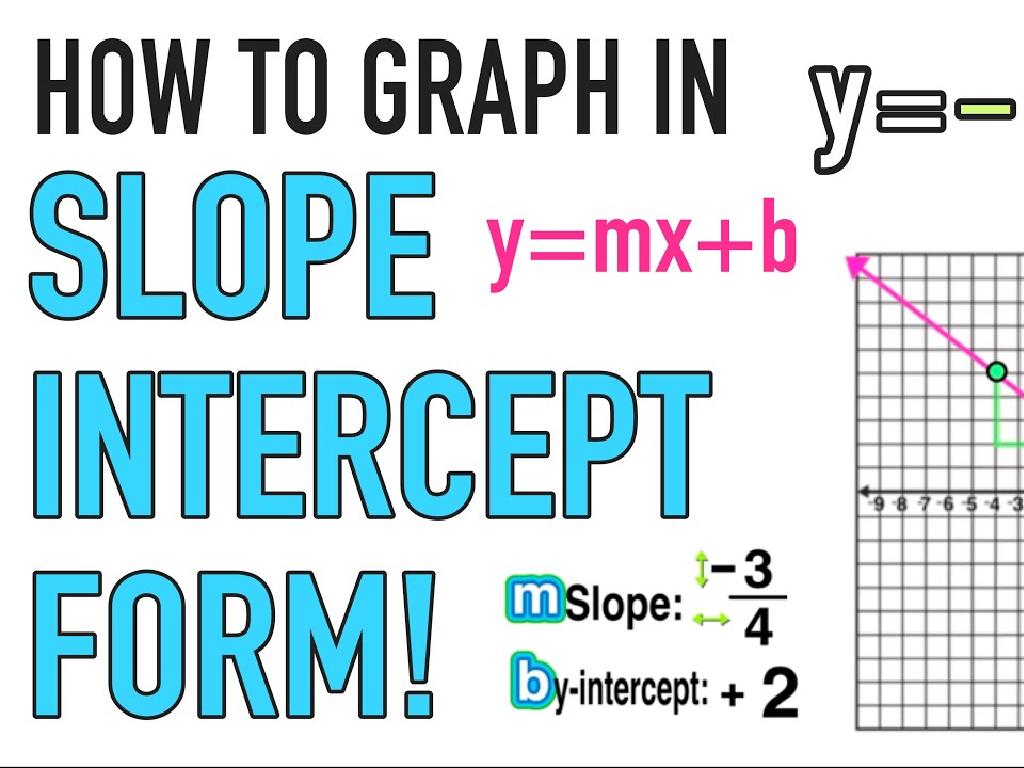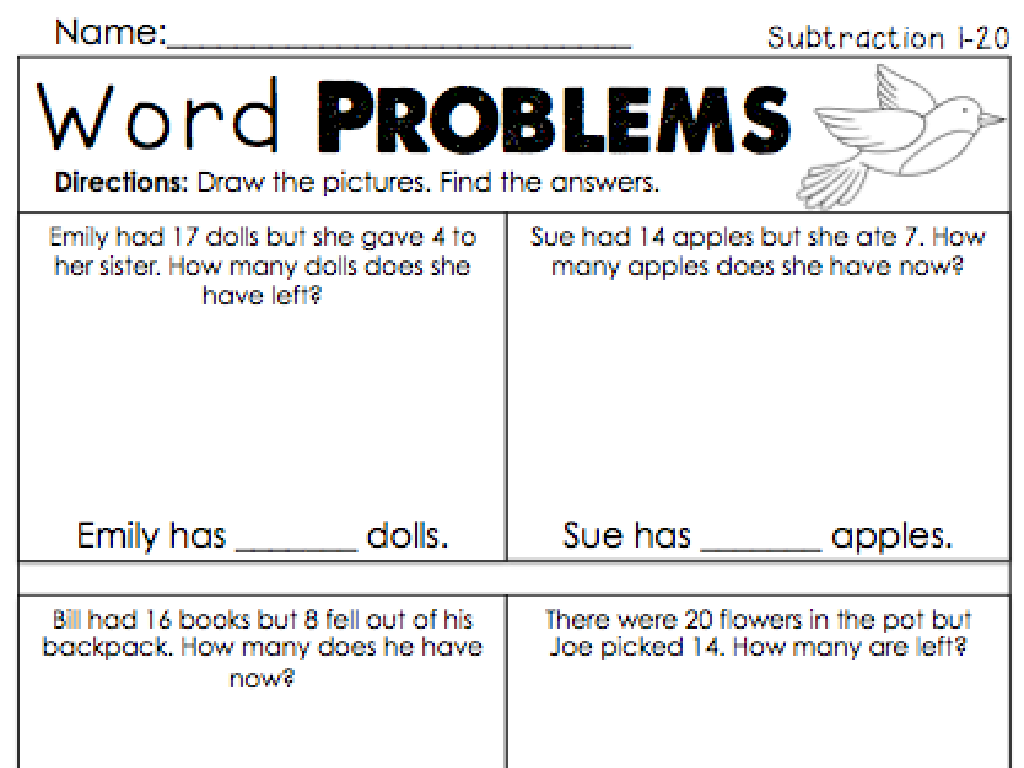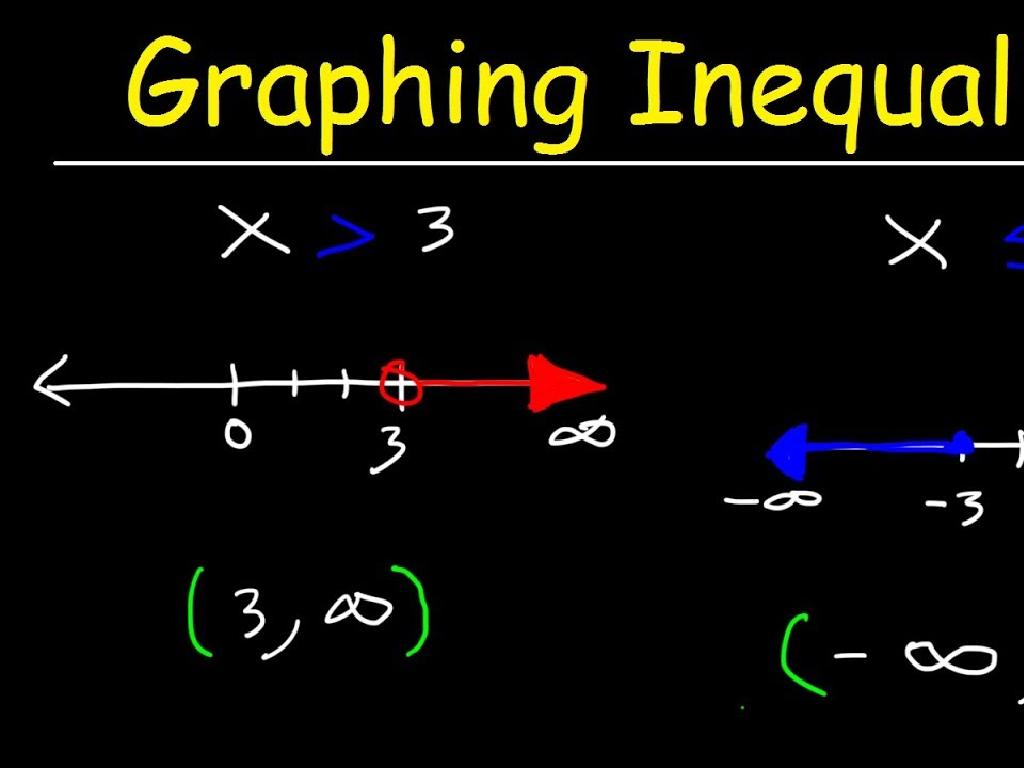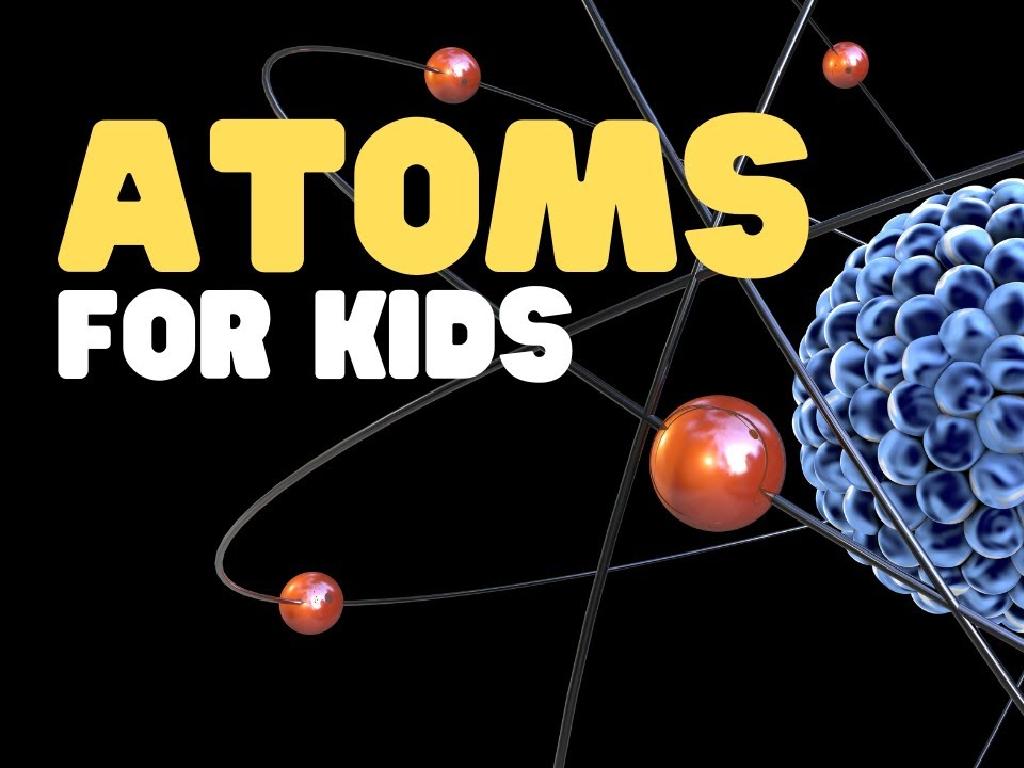Compare Strengths Of Magnetic Forces
Subject: Science
Grade: Third grade
Topic: Magnets
Please LOG IN to download the presentation. Access is available to registered users only.
View More Content
Exploring Magnetic Forces
– What is a magnet?
– A magnet is an object that can pull certain metals towards itself
– Magnets have north and south poles
– Every magnet has two ends: a north pole and a south pole
– Magnets attract certain metals
– Like iron, nickel, and cobalt are attracted to magnets
– Comparing strength of magnets
– We can test which magnet is stronger by seeing how many paper clips it picks up
|
Begin the lesson by defining a magnet and explaining its basic properties. Emphasize that magnets have two poles, north and south, which are important for understanding magnetic forces. Discuss the types of metals that magnets attract, such as iron, nickel, and cobalt, and introduce the concept of magnetic attraction. To compare the strength of magnetic forces, demonstrate with an activity where students predict and then observe how many paper clips different magnets can pick up. This hands-on activity will help solidify their understanding of magnetic strength. Encourage students to ask questions and think about why some magnets might be stronger than others.
What Makes a Magnet?
– Explore the magnetic field
– Invisible force surrounding a magnet
– Magnets have North and South Poles
– Every magnet has two opposite ends or ‘poles’
– Magnets attract specific metals
– Iron, nickel, and cobalt stick to magnets
– Experiment with magnetism
|
Begin the lesson by explaining that magnets have an invisible force called a magnetic field. Use a magnet and iron filings to demonstrate this field visually. Discuss the North and South Poles of a magnet, and how they are found at the two ends of any magnet. Explain that magnets don’t attract all materials; they only attract metals like iron, nickel, and cobalt. Set up a simple classroom experiment where students can use magnets to test various materials to see which are attracted to the magnet, reinforcing the concept of magnetic attraction. This hands-on activity will help solidify their understanding of magnetic forces.
Exploring Magnet Strengths
– Permanent vs. Temporary Magnets
– Permanent magnets always stick; temporary ones only stick sometimes.
– Various shapes of magnets
– Bar, horseshoe, disc, and ring magnets.
– Uses of different shaped magnets
– Horseshoe magnets hold papers on fridges; bar magnets in science experiments.
– Finding classroom magnetic objects
– Let’s predict and test which items are magnetic!
|
This slide introduces students to the concept of magnetic strength and the different types of magnets. Start by explaining the difference between permanent magnets, which are always magnetic, and temporary magnets, which can act like a magnet when they are near a strong magnetic field. Discuss the shapes of magnets and their specific uses, such as horseshoe magnets for holding things or bar magnets for educational demonstrations. Engage the class by asking them to predict which objects around the classroom might be magnetic and then allow them to test their hypotheses. This activity will help them understand the practical applications of magnets in everyday life and develop their scientific inquiry skills.
Exploring Magnetic Forces
– What is magnetic force?
– It’s an invisible push or pull by a magnet
– Feeling force without touch
– Magnets can push or pull each other without touching
– Experiment with two magnets
– We’ll feel the force as magnets move closer or apart
|
Begin the lesson by explaining that magnetic force is an invisible force that can push or pull objects without direct contact. It’s a concept that might seem magical to third graders, but it’s a natural phenomenon. Demonstrate this by slowly bringing two magnets close together until the students feel the resistance, then pulling them apart to feel the attraction. This hands-on experiment will help them understand the concept of magnetic force. Encourage the students to try this with different sizes of magnets to compare the strength of the force. Discuss how the distance between the magnets affects the strength of the force they feel. This activity will help solidify their understanding of magnetic forces and how they operate in the space around a magnet.
Comparing Magnetic Strength
– Magnets have different strengths
– Strong magnets can lift more
– For example, a refrigerator magnet vs. an electromagnet
– Weak magnets lift less
– A small fridge magnet may only hold a photo
– Activity: Finding the strongest magnet
– We’ll test different magnets to see which can hold the most paper clips
|
This slide introduces the concept that magnets vary in strength. Some magnets, like those used in industrial settings, are very strong and can lift heavy objects. Others, like the magnets on your fridge, are weaker and can only hold lightweight items like a sheet of paper. During the activity, students will test various magnets to compare their strength by seeing how many paper clips each can hold. This hands-on experience will help them understand the practical differences in magnetic force. Prepare a set of different magnets and paper clips for the activity. Ensure safety by supervising the use of stronger magnets.
Exploring Magnetic Force Strength
– Distance affects magnetic force
– Magnets pull stronger when closer together.
– Size and magnetic strength
– Is a bigger magnet always stronger? Let’s see!
– Material impacts magnetism
– Not all metals are equally magnetic.
– Experimenting with magnets
|
This slide introduces the factors that affect the strength of magnetic forces. Explain that the force between magnets gets stronger as they move closer and weaker as they move apart. Discuss whether the size of a magnet always correlates with its strength, and test this with different-sized magnets. Review which materials are magnetic (iron, nickel, cobalt) and which are not, and have students predict and test the magnetism of various objects. Incorporate a hands-on activity where students can experiment with magnets of different sizes and materials to see how these factors affect magnetic strength. This will help them understand the concept of magnetic forces in a tangible way.
Magnet Strength Experiment
– Gather different magnets and materials
– Predict the strongest magnet
– Think about size, shape, and material
– Perform the lifting test
– Use paper clips to test magnet strength
– Observe and record findings
– Which magnet lifted the most?
|
This hands-on activity is designed to help students understand the concept of magnetic force through direct experimentation. Provide a variety of magnets bar, horseshoe, and disc magnets and materials like paper clips and iron filings. Before the experiment, ask students to predict which magnet will lift the most paper clips, encouraging them to consider factors such as the magnet’s size and shape. During the experiment, students will test each magnet’s strength by counting how many paper clips it can lift. Afterward, they will observe and record their findings, comparing the results with their predictions. This activity will not only demonstrate the concept of magnetic strength but also introduce basic scientific methods such as hypothesizing, testing, and concluding.
Class Activity: Magnetic Olympics
– Form teams and pick a champion magnet
– Engage in magnetic lifting, racing, and attracting
– Observe and note the winning magnet
– Which magnet lifted the most? Which was fastest?
– Discuss the strength of different magnets
– Why did some magnets perform better?
|
This interactive class activity is designed to help students understand the concept of magnetic force through a fun and engaging ‘Magnetic Olympics’. Divide the class into small groups and provide a variety of magnets for each team. Students will test the strength of their chosen magnets by seeing how much weight they can lift, how fast they can move objects in a race, and how far they can attract metallic objects. Each team will record their observations and determine which magnet is the strongest based on the events. After the activities, lead a discussion on why some magnets performed better than others, touching on concepts like magnet size, material, and shape. This will help students grasp the practical aspects of magnetic forces.
Wrapping Up: Magnetic Forces
– Recap of magnetic force lessons
– Discussing our Magnetic Olympics
– How did different magnets perform?
– Curiosities about magnets
– What wonders about magnets do you have?
– Encouraging further questions
|
As we conclude today’s lesson, we’ll revisit the key points about magnetic forces. Reflect on the activities from our ‘Magnetic Olympics’ to understand how different magnets compare in strength. Encourage the students to ask questions or share any interesting thoughts they have about magnets. This discussion will help solidify their understanding and spark curiosity for further exploration into the world of magnets. It’s also an opportunity to assess their comprehension and clarify any misconceptions. Remember to celebrate their discoveries and encourage their inquisitive nature.
Homework Challenge: Magnetic Hunt
– Find 3 magnetic objects at home
– Draw each object and its location
– Sketch where you found them, like on the fridge
– Describe how each object is used
– Explain if it holds papers, sticks to a metal surface, etc.
– Share your discoveries next class
|
This homework activity is designed to engage students with the practical aspect of magnets in their everyday environment. It encourages exploration and observation skills as they search for magnetic objects at home. The drawing component helps with their understanding of context and usage, while the sharing aspect aims to build communication skills and confidence. For the next class, prepare a session where each student can present their findings and discuss the strength of the magnetic force based on where and how the objects are used. This will also be an opportunity to introduce concepts like magnetic materials and the difference in the strength of magnetic forces.

